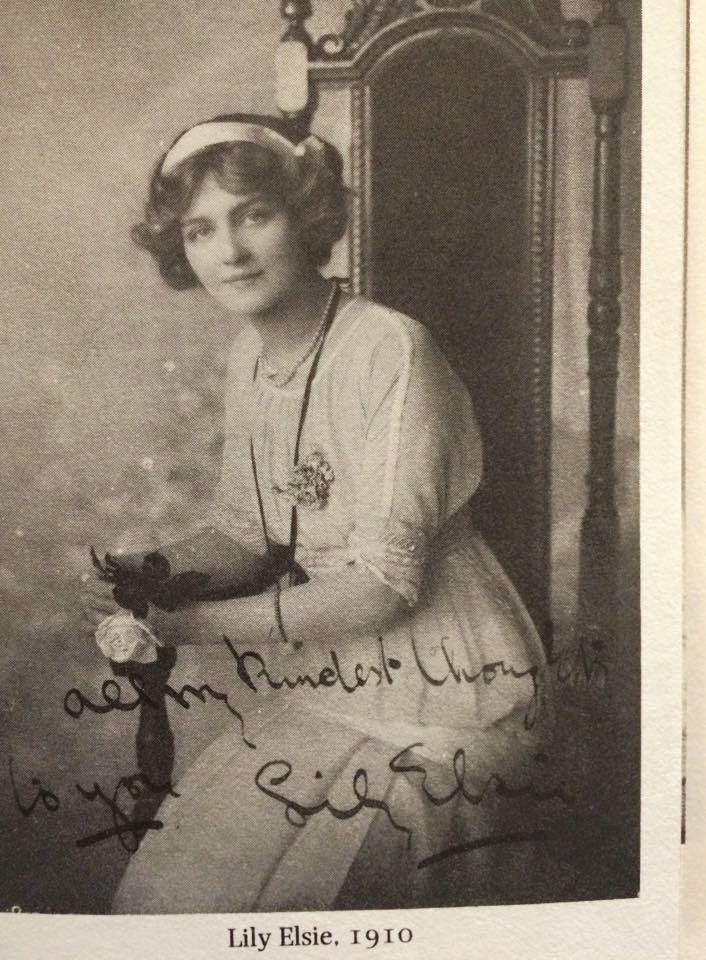Cecil Beaton was born January 14th 1904 in Hampstead. He was one of four siblings. It's said that being born in the Edwardian Era greatly influenced his personality. Beaton was quite fond of his mother and aunt Jessie (Aunt Jessie was elaborate and loud, and later served as inspiration for My Fair Lady.) Being so fond of them, he often chose to hang out with them rather than do other "boyish" things. Being around them so often they observed that he "always sought out the detail rather than the conception as a whole" (Beaton, & Vickers, 2003, p.8).
Another source of inspiration was a postcard of Lily Elsie he found when he was young. Her hair was pilled on top of her head.
 |
| (The unexpurgated Beaton: the Cecile Beaton diaries as he wrote them, p. 99) |
Cecil said "The beauty of it caused my heart to leap." Then began his interest in photography.
Whenever Cecil went for walk he would stop at local stationers just to look at the postcards that were displayed. He would also look at magazines and cut out pictures of Gertie Millar, Florence Smithson, and Gaby Deslys. He would also intently study photographs of stage sets and designs through a magnifying glass.
When it was time for Beaton to go to school he was enrolled at Heath Mount Preparatory school. During his time there he was often bullied by the kids. He wasn't like the other boys at school. He subscribed to the 'Captain' a schoolboy's weekly and would spend his time cutting out portraits of the actresses and paste them into a scrapbook.
After three years at Heath Mount, his parents then sent him to Harrow boarding school. Beaton wasn't good at school and hated sports. He loved art though and would take part in school plays by dressing up and creating backdrops.
During his days at Harrow he became an amateur photographer. He knew what he wanted to create but wasn't very skilled on the technical side of photography. Luckily, his family nanny (Alice Louise Collard) fondly known as "Ninnie" was a keen photographer. She was able to take great photos and print her own films. She showed Beaton how to take pictures and taught him the technical photography skills he needed. They had an interesting relationship, she didn't quite understand his eye and he often grew quite jealous of her ability to take great pictures.
After Harrow, Beaton (through persuading from others) decided to go to Cambridge. Just like when he was enrolled at Harrow, he didn't really care for school and was more interested in the arts. He would have his friends take pictures of him to send into the newspaper. The newspaper would often publish the pictures along with a little blurb about a play he was in or designing for.
Throughout his school years and even after, Beaton struggled with accepting his homosexuality.
"I'm really a terrible, terrible homosexualist and try so hard not to be. I try so terribly hard to be good and not cheap and horrid..." (Beaton & Vickers, 2003, p. 40).
Beaton graduated Cambridge and wasn't quite sure what to do with himself. He knew one thing for sure, he didn't want to work for his dad in the family business. While he was "searching" for a job he often would take pictures of his sister and mother and send them into different publications.
 |
| Beaton's sisters Nancy and Baba (The unexpurgated Beaton: the Cecile Beaton diaries as he wrote them, p. 99) |
One time at a social event Beaton ran into the editor of Vogue, Dorothy Todd and she told him that he sends in good photographs but sends them in much too late and to try sending them ten days before print.
Cecil couldn't find a job so eventually he ended up working for his dad as a clerk. After eight days he quit. Beaton tried to find work on his own but couldn't. His dad set him up with a business man Schmeigelow. His dad wanted him to start out at the bottom and work his way. Beaton enjoyed Schmeigelow but after awhile couldn't handle the business environment anymore and quit.
Eventually Beaton got his first "break." He was went to a tea party at Allanhan's. He had taken pictures of her before and had them with him. The pictures were discovered and the women at the party went crazy for them. Beaton then began taking pictures of "bright young things" in society, launching his career.
Resources
Beaton, C.,
& Vickers, H. (2003). The unexpurgated Beaton: the Cecile Beaton
diaries as he wrote them, 1970-1980. New
York, NY: Alfred A. Knopf.
Vickers, H.
(1985). Cecil Beaton: A biography. Boston, MA: Little Brown.
No comments:
Post a Comment